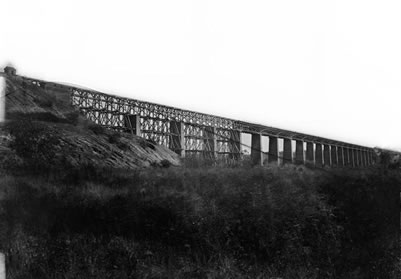Historical Clues: Setting the Stage for the Battle

Setting the Stage for the Battle
 Fig. 5-2: The High Bridge of the South Side Railroad across the
Fig. 5-2: The High Bridge of the South Side Railroad across theAppomattox River near Farmville, Virginia. Photographed
in April 1865 while under repair from fire damage sustained
during the war. Library of Congress
The army of General Robert E. Lee had been flushed from Petersburg, Virginia on April 2, 1865, and was daily being engaged in battles and skirmishes by the endless pursuit of U.S. Grant’s Union army. Unable to stop and rest, Lee’s Confederate army was in desperate need of both food and ammunition within days. By the time they got to the High Bridge, a tall railroad bridge that crossed the Appomattox River, they were quite determined to cross over (Fig. 5-2). They had word that a train full of supplies waited for them 3½ miles across the river at a town called Farmville. Just below the 125 foot tall railroad bridge was a wagon bridge used by locals to cross the river. It was near this smaller wooden wagon bridge where two battles were fought in two consecutive days, April 6 and 7, 1865. Although called the Battle for High Bridge, a good deal of the fighting occurred on or near the much smaller wooden wagon bridge. The battling there was the tipping point which led to Lee’s surrender just two days later (5.3).
Watching the Shot. © 2025 All rights reserved. Terms of Use and Privacy Policy
